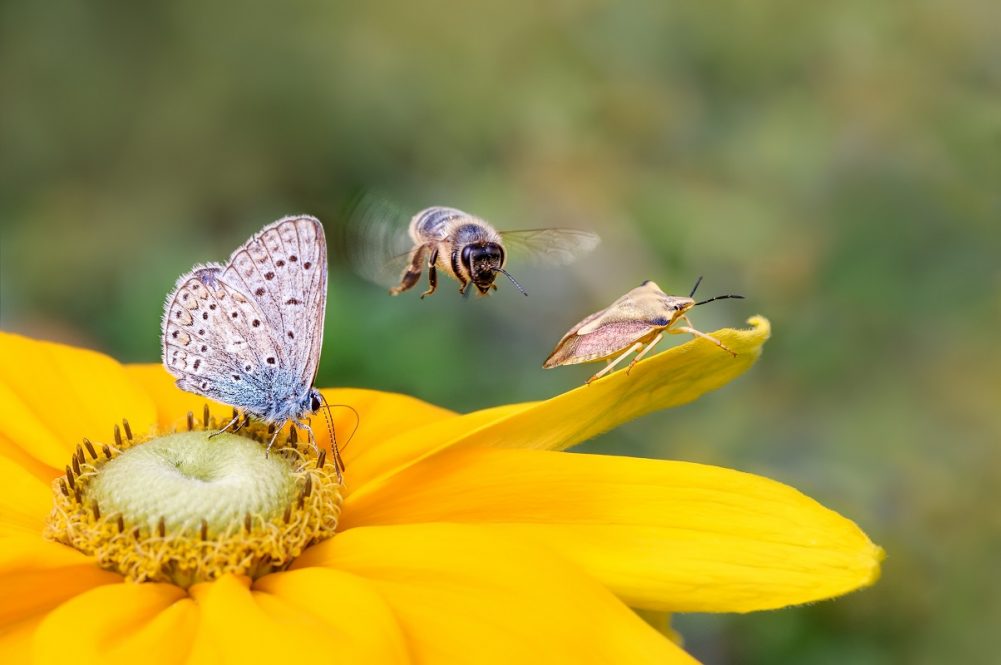A recent special issue of the Proceedings of the National Academy of Sciences exploring the current state of knowledge of the world’s insect populations – with an introduction penned by authors including Professor of Ecology and Evolutionary Biology David Wagner – has caught the imagination of the public in a way that’s rare for scientific research.
In the weeks since publication, the article has been downloaded more than 55,000 times – more than 1,000 times a day – a remarkable figure for an academic journal, and a testament to the impact of the special issue’s message about growing danger for insect populations.
Amid the flurry of media attention sparked by the publication, Wagner met with UConn Today to answer some questions about the call for action.
What has the reception to the special issue been like?
The response has been exceptionally positive. The thirteen collected articles have been downloaded 210,758 times, and have already accumulated 39 citations in less than 2 months. Eleven of the articles in the special issue have Altmetric scores of 90 or more–no previous PNAS Special Feature has had so many high-ranking papers. Our introductory review that I authored with Matt Forister and May Berenbaum has been downloaded more than 55,000 times. Its Altmetric score is in the top 99% of all PNAS articles.
Insects have seemingly slipped through the cracks in terms of research, data, and funding. How has that happened?
The clarion call for global actions on behalf of insects have lagged behind those for bird, large mammals, and frogs for several reasons. Because of their small size they get less attention, but the biggest problem may be their wild population cycles. They are boom and bust animals whose numbers can wax and wane over one or two orders of magnitude in as many years. Such fluctuations make it very hard to document downward annual declines of 1-2% (rates common to birds, mammals, and butterflies).
What is the main message you hope to convey?
First, to draw attention to their plight, the alarming rates of decline, and principle drivers for their dwindling numbers. Also, in getting others to care, by educating people and policy-makers, about their ecological and economic importance. We must have insects for the pollination of our crops; the biological control of pests and disease vectors; for nutrient cycling, soil formation, and water purification; and perhaps most importantly, because they are the fabric of food webs. Without insects, we might as well say goodbye to most wildflowers, birds, fish, reptiles and amphibians, and many mammals. Springs would be silent, indeed dismal.
What are the factors driving insect declines?
The factors driving insect declines are largely the same as those tearing into other limbs of the tree of life: deforestation, agricultural intensification, climate change, desertification, nitrification, and invasive species. To these can be added stressors that disproportionately affect insects, such as insecticides, herbicides (because these destroy nectar sources and larval foodplants), and light pollution. After we go to bed, the real action starts with insects: for every type of butterfly we see by day in Storrs, know that there 14 species of moths that do their business under cover of darkness. Streetlights, house lights, and headlights disorient moths and other nocturnal insects. Lights left on at night are feeding stations for bats, and most any that settle near the light, are likely to be devoured by birds the next morning.
There are instances of certain insect populations increasing in abundance, are the causes in those instances known?
There are over 10 million insects in the world. No matter what we do, some will be winners – think of cockroaches and bedbugs as two examples – and some will be losers: often “ecological specialists,” large species that are more conspicuous. With global warming, many southern species are moving north, while boreal species are retreating northward or perishing. Connecticut has added two new beautiful swallowtail butterflies since I came to UConn in 1988, but over this same period it has lost five or six species of butterflies. Worse still, most of Connecticut’s butterflies are declining in abundance.
Are there new initiatives that give you hope?
There is always hope. We must focus on solutions. Climate change is threatening insects from pole to pole. The new administration’s aggressive position on climate change and other environmental matters is hopeful. UConn climate activism has been exemplary: its administration, faculty, staff, and students have helped make the University a national and international model of environmental activism for other institutions of high education. I feel fortunate to be among so many like-minded, progressive doers.
What should be done right now to prevent further declines?
There are many actions that individuals can engage in to promote the protection of nature: first and foremost, to be active in policymaking at the campus, local, state, regional, national, and international levels. Share your views. Lead. Rewild parts of your yard, a school ground, community spaces. Say no to ornamental plants: plant natives instead. Curb pesticide use, especially for cosmetic purposes. Be an ambassador for the creatures that can’t vote: educate, motivate, advocate, bring change. Mother Nature desperately needs our help, if not for pollinators and other insects, then for wildflowers, birds, and the frogs that are about to usher in another glorious spring.



